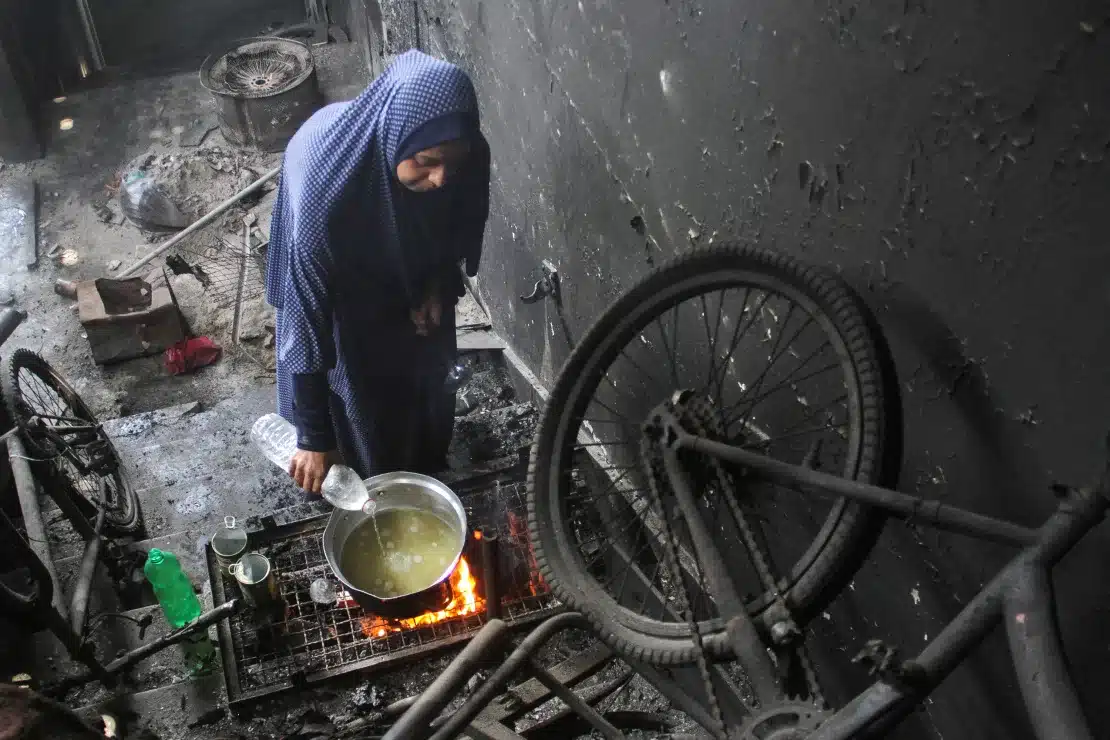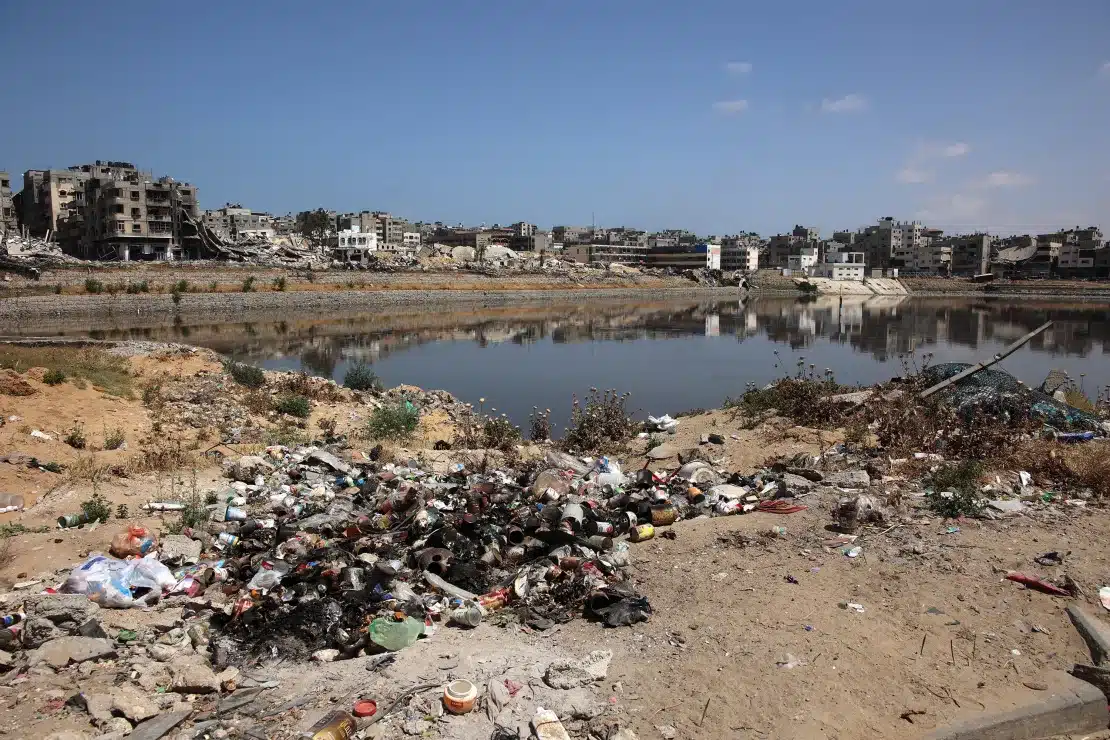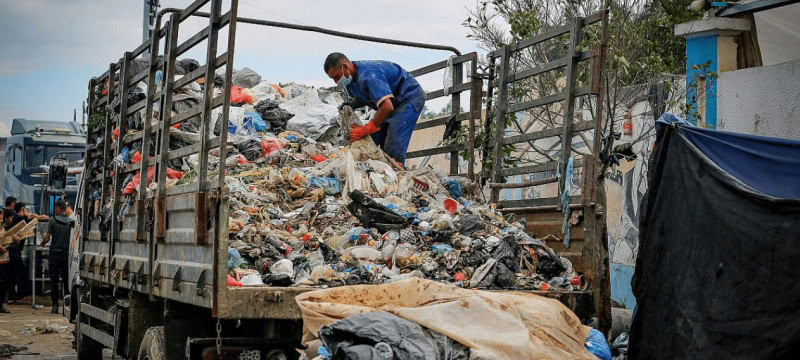As summer intensifies, Gaza faces a health crisis with raw sewage, swarms of flies and mosquitoes, and piles of garbage filling the streets. Ismail Zayda from Gaza City reports that water supplies have been cut off for nine months, and municipal services are not functioning.
The situation has led to the emergence of new insects, some of which sting residents and their children. Israel’s ongoing bombardment, which began in October, has exacerbated the humanitarian crisis, drawing concerns from human rights organizations about the deteriorating living conditions for Palestinians.
Read more: UN Says Gaza Civilian Deaths In Israeli Raid Could Be War Crimes

There’s little indication of an end to the prolonged and violent conflict. A ceasefire plan supported by the US was overwhelmingly endorsed by the United Nations Security Council (UNSC) this week. However, neither side has agreed to it. Israeli Prime Minister Benjamin Netanyahu has reiterated his commitment to continue until Hamas is eradicated and the remaining hostages are released.
According to an assessment by the UN Office for the Coordination of Humanitarian Affairs (OCHA) this week, in Deir al Balah in central Gaza, where thousands of displaced people are seeking shelter, families report overcrowded conditions in the shelters. They have documented various health issues, including hepatitis A, skin diseases, and respiratory illnesses, and have indicated that access to water is critically low.
At one displacement site, the average daily water supply per person was less than one liter, significantly below the internationally recognized minimum requirement for survival of three liters per day, as stated by OCHA.
A reliable water supply is crucial not only for drinking and cooking but also for preventing the spread of disease.

This week, OCHA reported that over two-thirds of water and sanitation facilities and infrastructure in Gaza have been destroyed or damaged as a result of the conflict. Additionally, many other facilities are non-operational due to various challenges, including insecurity, access difficulties, and lack of power and fuel to run generators.
OCHA highlighted that people’s coping mechanisms are severely strained, with the most vulnerable individuals collecting water from unreliable sources using inadequate containers, and lacking basic hygiene items such as soap.
The average high temperature in Gaza for the upcoming week is expected to be in the low 30 degrees Celsius, with warmer weather likely to exacerbate the existing sanitation crisis.
Streets are flooded with sewage
The roads are inundated with sewage, says Zayda, a Gaza City resident, describing how an out-of-service swimming pool in his area has become a breeding ground for insects.
“During the day, flies come, and at night, mosquitoes spread… We light fires at night and burn garbage until the flying insects disappear.”
Zayda spends much of the day wearing a mask, partly because some vehicles run on burned frying oil instead of diesel, making breathing difficult.
“The roads are full of sewage running through the streets, waste, and rubble from the bombing,” he said.
The treatment of sewage amid damaged infrastructure and a lack of fuel has become a persistent problem in Gaza.
Carl Skau, Deputy Executive Director of the World Food Programme, said after a tour of Gaza this week that a million people have been pushed out of Rafah and are now “trapped” in a “highly congested area along the beach in the burning summer heat.”
“We drove through rivers of sewage,” he said.
According to OCHA, the delivery of some fuel supplies has helped reduce the level of accumulated wastewater in the Sheikh Radwan area in Gaza City, but “the lack of a steady flow of fuel creates a continued risk of sewage overflow into neighboring areas.”

Assem Al-Nabih, media officer for the Gaza City Municipality, informed CNN that there is currently “a significant leakage of sewage in various parts of the city and also into the sea.”
He explained, “There is considerable damage to the sewer lines and sewage pumps, resulting in the leakage of sewage and wastewater throughout the city.”
Al-Nabih estimated that more than 4 kilometers of water pipelines had been destroyed or damaged, a vast expanse to repair amid ongoing conflict.
According to recent assessments by UN agencies and partner organizations, 67% of water and sanitation facilities and infrastructure in Gaza have been destroyed or damaged due to the conflict.
Efforts to repair infrastructure are sporadic. The Coastal Municipalities Water Utility, in collaboration with the International Committee of the Red Cross, has restored several wells in Khan Younis, Deir Al Balah, and Nuseirat.
However, the magnitude of the task, combined with the absence of a ceasefire and limited fuel supplies and equipment, far exceeds the capability of local authorities in Gaza.









